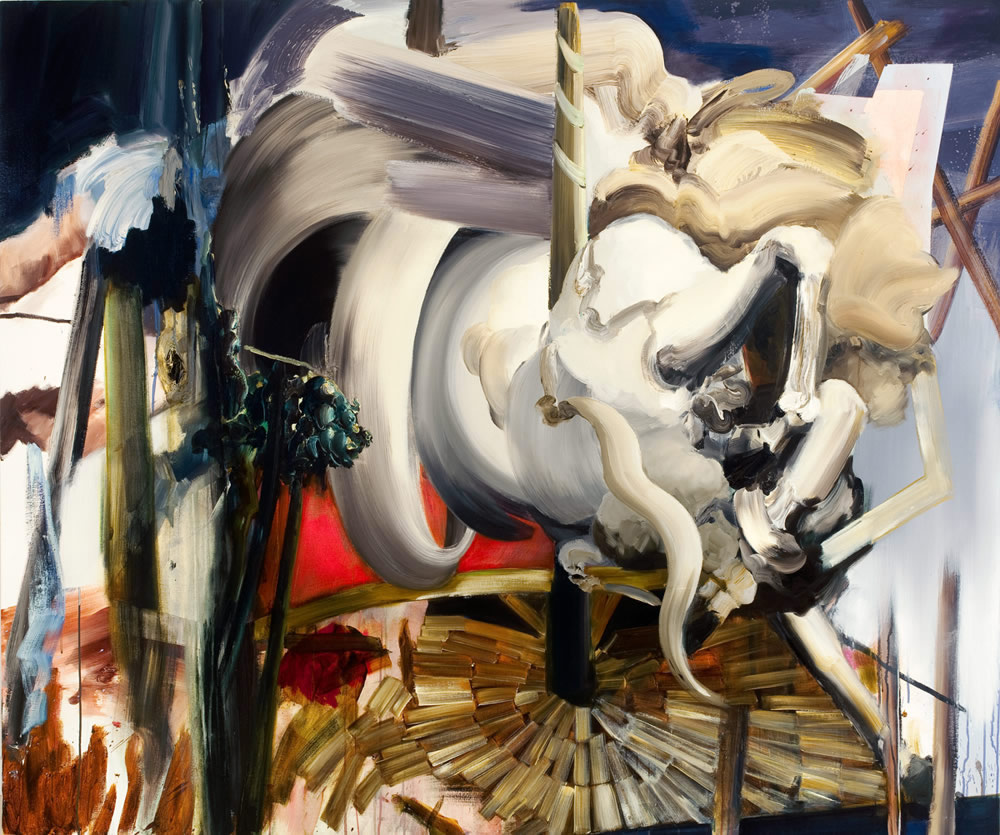By Randy Gladman
A vast array of analytical essays exists in the blogosphere that seeks to explain why we collect art. Like trying to understand why we fall in love, the gamut of explanations is at once highly diverse yet difficult to nail down. The need for decorative embellishment, the expected investment value, the putting on of sophisticated airs, the desire for direct participation in culture… These certainly affect acquisition decisions and add fuel to the art market fire but they do not explain the emotional, cerebral pleasure collectors receive from their art trophies. Ask anyone who truly values the pieces they have acquired and they will describe a deep love and connection with these objects quite unlike any relationship with other inanimate things they own. What is the source of this bond?
A decade or so ago, I gradually came to the realization that, much to my disappointment and stunned shock, I was not the artistic talent I had previously believed myself to be. Though I had the temperament, passion and desire, it turned out I had none of the vision, dedication, originality nor persistence prerequisite for a life as an artist. The realization shattered my heretofore self-identity — one I had worn like a wetsuit since my earliest teen years — and set me off on various tangents that eventually led to my current satisfactory, pleasant and lucrative life, happy yet lacking the gushing creative outlet I had once dreamed possible and naively believed to be inevitable.
As a teen, I was surrounded by highly talented kids; guitarists, artists, singers, dancers, basketball players, ski racers, championship horseback riders. A couple decades on, nearly all of these people have matured into their current slots in societal production; land developers, accountants, lawyers, doctors, moms, teachers, shrinks and saleswomen. Early expectations and ambitious desires became the standard casualties of economic demands, family pressures, and general reality. In contemporary culture, there is likely no more common story. It is one of the most pathetic if benign truths so many of us share; adolescent ideals making way for adult needs and responsibilities. How many boxes of relics of early creativity collect dust in how many garages, filled with promise but lacking follow through and commitment?
Some of our acquaintances from earlier lives escaped the numbing, grinding coil and, against all odds, managed to stay true to their earlier creative paths and found gainful employment as creative producers. Most of these people are still required to tailor their output to a market economy and toil on the commercial side of creative endeavor. In a very few cases, however, these individuals have achieved startling successes in the fine arts. Those of us caught in the grid, whose burning diamonds turned out to be chunks of coal, watch from afar, trapped in the wide ranks of normalcy, as the few real artists in our social universes blaze disjunctive paths at Escher-like angles to our own well-tread horizons. I’ve watched with covetous amazement as a lucky few artists from my own local community (young rising stars like Kristine Moran, Jason Gringler, Daniel Borins and Jennifer Marman) have resisted the gravitational forces of logical economic reality and thrust through the otherwise impossible barriers to the professional art ranks to achieve successful orbit in the international market.
Though inflected with sweet jealousy and watery spite, our encouragement and support for talent and artistry generally squirts forth in the form of ticket purchases, hashtagged Tweets, gossipy interest, and other forms of disconnected admiration from afar. But collecting contemporary artworks is one of the important ways in which the rest of us can participate directly in these beautiful lives. It is immediate and personal. While buying a ticket to a film or performance offers only the most detached and fleeting participation with the creative object of admiration, acquiring art offers a material, lengthy and visceral relationship. Rather than providing an ephemeral opportunity to play an insignificant part in a mass audience, collecting art offers ownership and the right to hang a pound of the artists’ flesh in our homes. These objects are not mechanically-reproduced simulacra like DVDs or MP3s but actual bits of matter that were touched and enlivened by the artists, forged in their very presence, slaved over, injected with their spirit and sweat and breath. Existing as avatars, artworks promise material possession of a slice of the artistic life we once planned and expected for ourselves. Relics from the admired artists’ studios, these objects are substantial vestiges from our own lives-that-might-have-been had different decisions been made along the way.
This is something that the art-collecting “one per cent” have long understood. Who are most of these one per cent, if not peers from the successful lines of our own humdrum ranks who have achieved commercial success often through the sacrifice of their own artistic sensibilities? Were many of the hedge fund traders, investment bankers, dotcom founders, management consultants, doctors and lawyers not once creative kids whose future dreams of artistic identity gave way to earthbound realities and materialistic concerns? I’ve been to their homes; I’ve seen the dusty drum kits, obsolete camera collections, and long-forgotten portfolios hiding in plain view their basements.
Their collections of paintings by Matt Bahen or drawings by Nicholas Di Genova are loving requiems for their own cast-aside yet remembered lost ideals. They are the consolation prizes, the bitter-sweet trophies for having made the rational choices, the reminders of a more glorious life that was expected but not realised.
Originally published in the Financial Times of London’s How To Spend It, January 12, 2012.




